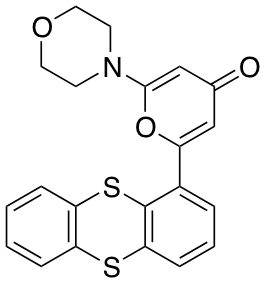Ambient
Showing 98451–98500 of 150277 results
-

KOH SOLUTION 45-46.5% 8PINT – BAKR3144-03, 8 pt.
$640.80 Add to cart View Product DetailsKOH SOLUTION 45-46.5% 8PINT
-

KOH SOLUTION 45-46.5% 8PINT – BAKR3144-03, 8 pt.
$200.26 Add to cart View Product DetailsKOH SOLUTION 45-46.5% 8PINT
-

Kojibiose
$990.15 Add to cart View Product DetailsMolecular Formula : C12 H22 O11
-

Kojic Acid
$50.03 Add to cart View Product DetailsMolecular Formula : C6 H6 O4
-

Kojic Acid
$66.41 Add to cart View Product DetailsMolecular Formula : C6 H6 O4
-

Kojic Acid
$131.96 Add to cart View Product DetailsMolecular Formula : C6 H6 O4
-

Kojic acid
$44.42 Add to cart View Product DetailsKojic acid
-

Kojic acid
$100.26 Add to cart View Product DetailsKojic acid
-

Kojic acid
$188.70 Add to cart View Product DetailsKojic acid
-

Kojic acid
$355.90 Add to cart View Product DetailsKojic acid
-

Kojic Acid
$138.17 Add to cart View Product DetailsKojic Acid
-

Kojic Acid
$302.88 Add to cart View Product DetailsKojic Acid
-

Kojic Acid
$1,814.09 Add to cart View Product DetailsKojic Acid
-

Kojic Acid
$6,412.14 Add to cart View Product DetailsKojic Acid
-

Kojic Acid
$24,616.18 Add to cart View Product DetailsKojic Acid
-

Kojic Acid
$33,877.15 Add to cart View Product DetailsKojic Acid
-

Kojic Acid
$85.80 Add to cart View Product DetailsKojic Acid
-

Kojic Acid
$726.72 Add to cart View Product DetailsKojic Acid
-

Kollisolv PEG 300
$144.90 Add to cart View Product DetailsMolecular Formula : H2 O(C2 H4 O)n
-

Kollisolv PEG 300
$299.29 Add to cart View Product DetailsMolecular Formula : H2 O(C2 H4 O)n
-

Kollisolv PEG 300
$592.54 Add to cart View Product DetailsMolecular Formula : H2 O(C2 H4 O)n
-

KRAS, His, Human (G12C)
$1,293.75 Add to cart View Product DetailsThe KRAS gene provides instructions for making a protein called K-Ras, part of the RAS/MAPK pathway. The protein relays signals from outside the cell to the cell’s nucleus. These signals instruct the cell to grow and divide (proliferate) or to mature and take on specialized functions (differentiate). The K-Ras protein is a GTPase, which means it converts a molecule called GTP into another molecule called GDP. In this way the K-Ras protein acts like a switch that is turned on and off by the GTP and GDP molecules. KRAS is usually tethered to cell membranes because of the presence of an isoprene group on its C-terminus. There are two protein products of the KRAS gene in mammalian cells that result from the use of alternative exon 4 (exon 4A and 4B respectively): K-Ras4A and K-Ras4B, these proteins have different structure in their C-terminal region and use different mechanisms to localize to cellular membranes including the plasma membrane.
-

KRAS, His, Human (G12C)
$189.75 Add to cart View Product DetailsThe KRAS gene provides instructions for making a protein called K-Ras, part of the RAS/MAPK pathway. The protein relays signals from outside the cell to the cell’s nucleus. These signals instruct the cell to grow and divide (proliferate) or to mature and take on specialized functions (differentiate). The K-Ras protein is a GTPase, which means it converts a molecule called GTP into another molecule called GDP. In this way the K-Ras protein acts like a switch that is turned on and off by the GTP and GDP molecules. KRAS is usually tethered to cell membranes because of the presence of an isoprene group on its C-terminus. There are two protein products of the KRAS gene in mammalian cells that result from the use of alternative exon 4 (exon 4A and 4B respectively): K-Ras4A and K-Ras4B, these proteins have different structure in their C-terminal region and use different mechanisms to localize to cellular membranes including the plasma membrane.
-

KRAS, His, Human (G12C)
$137.14 Add to cart View Product DetailsThe KRAS gene provides instructions for making a protein called K-Ras, part of the RAS/MAPK pathway. The protein relays signals from outside the cell to the cell’s nucleus. These signals instruct the cell to grow and divide (proliferate) or to mature and take on specialized functions (differentiate). The K-Ras protein is a GTPase, which means it converts a molecule called GTP into another molecule called GDP. In this way the K-Ras protein acts like a switch that is turned on and off by the GTP and GDP molecules. KRAS is usually tethered to cell membranes because of the presence of an isoprene group on its C-terminus. There are two protein products of the KRAS gene in mammalian cells that result from the use of alternative exon 4 (exon 4A and 4B respectively): K-Ras4A and K-Ras4B, these proteins have different structure in their C-terminal region and use different mechanisms to localize to cellular membranes including the plasma membrane.
-

KRAS, His, Human (G12D)
$1,293.75 Add to cart View Product DetailsThe KRAS gene provides instructions for making a protein called K-Ras, part of the RAS/MAPK pathway. The protein relays signals from outside the cell to the cell’s nucleus. These signals instruct the cell to grow and divide (proliferate) or to mature and take on specialized functions (differentiate). The K-Ras protein is a GTPase, which means it converts a molecule called GTP into another molecule called GDP. In this way the K-Ras protein acts like a switch that is turned on and off by the GTP and GDP molecules. KRAS is usually tethered to cell membranes because of the presence of an isoprene group on its C-terminus. There are two protein products of the KRAS gene in mammalian cells that result from the use of alternative exon 4 (exon 4A and 4B respectively): K-Ras4A and K-Ras4B, these proteins have different structure in their C-terminal region and use different mechanisms to localize to cellular membranes including the plasma membrane.
-

KRAS, His, Human (G12D)
$189.75 Add to cart View Product DetailsThe KRAS gene provides instructions for making a protein called K-Ras, part of the RAS/MAPK pathway. The protein relays signals from outside the cell to the cell’s nucleus. These signals instruct the cell to grow and divide (proliferate) or to mature and take on specialized functions (differentiate). The K-Ras protein is a GTPase, which means it converts a molecule called GTP into another molecule called GDP. In this way the K-Ras protein acts like a switch that is turned on and off by the GTP and GDP molecules. KRAS is usually tethered to cell membranes because of the presence of an isoprene group on its C-terminus. There are two protein products of the KRAS gene in mammalian cells that result from the use of alternative exon 4 (exon 4A and 4B respectively): K-Ras4A and K-Ras4B, these proteins have different structure in their C-terminal region and use different mechanisms to localize to cellular membranes including the plasma membrane.
-

KRAS, His, Human (G12D)
$137.14 Add to cart View Product DetailsThe KRAS gene provides instructions for making a protein called K-Ras, part of the RAS/MAPK pathway. The protein relays signals from outside the cell to the cell’s nucleus. These signals instruct the cell to grow and divide (proliferate) or to mature and take on specialized functions (differentiate). The K-Ras protein is a GTPase, which means it converts a molecule called GTP into another molecule called GDP. In this way the K-Ras protein acts like a switch that is turned on and off by the GTP and GDP molecules. KRAS is usually tethered to cell membranes because of the presence of an isoprene group on its C-terminus. There are two protein products of the KRAS gene in mammalian cells that result from the use of alternative exon 4 (exon 4A and 4B respectively): K-Ras4A and K-Ras4B, these proteins have different structure in their C-terminal region and use different mechanisms to localize to cellular membranes including the plasma membrane.
-

Kresoxim-methyl
$78.49 Add to cart View Product DetailsMolecular Formula : C18 H19 N O4
-

Kresoxim-methyl
$106.95 Add to cart View Product DetailsMolecular Formula : C18 H19 N O4
-

Kresoxim-methyl
$142.31 Add to cart View Product DetailsMolecular Formula : C18 H19 N O4
-

Kresoxim-methyl-d7
$266.51 Add to cart View Product DetailsMolecular Formula : C18H12D7NO4
-

Kresoxim-methyl-d7
$2,032.05 Add to cart View Product DetailsMolecular Formula : C18H12D7NO4
-

KRN7000
$178.54 Add to cart View Product DetailsMolecular Formula : C50 H99 N O9
-

KRN7000
$313.95 Add to cart View Product DetailsMolecular Formula : C50 H99 N O9
-

KRN7000
$2,185.58 Add to cart View Product DetailsMolecular Formula : C50 H99 N O9
-

KU 55933
$65.55 Add to cart View Product DetailsMolecular Formula : C21H17NO3S2
-

KU 55933
$103.50 Add to cart View Product DetailsMolecular Formula : C21H17NO3S2
-

KU 55933
$432.11 Add to cart View Product DetailsMolecular Formula : C21H17NO3S2
-

KU-0058948
$166.46 Add to cart View Product DetailsMolecular Formula : C21 H21 F N4 O2
-

KU-0058948
$269.96 Add to cart View Product DetailsMolecular Formula : C21 H21 F N4 O2
-

KU-0058948
$2,286.49 Add to cart View Product DetailsMolecular Formula : C21 H21 F N4 O2
-

Kynuramine Dihydrobromide
$150.94 Add to cart View Product DetailsMolecular Formula : C9H12N2O . 2HBr
-

Kynuramine Dihydrobromide
$670.16 Add to cart View Product DetailsMolecular Formula : C9H12N2O . 2HBr
-

Kynuramine Dihydrobromide
$1,185.08 Add to cart View Product DetailsMolecular Formula : C9H12N2O . 2HBr
-

Kynurenic Acid
$56.93 Add to cart View Product DetailsMolecular Formula : C10 H7 N O3
-

Kynurenic Acid
$67.28 Add to cart View Product DetailsMolecular Formula : C10 H7 N O3
-

Kynurenic Acid
$77.63 Add to cart View Product DetailsMolecular Formula : C10 H7 N O3
-

Kynurenic Acid
$35.97 Add to cart View Product DetailsKynurenic Acid
-

Kynurenic Acid
$49.57 Add to cart View Product DetailsKynurenic Acid
-

Kynurenic Acid
$202.79 Add to cart View Product DetailsKynurenic Acid


























